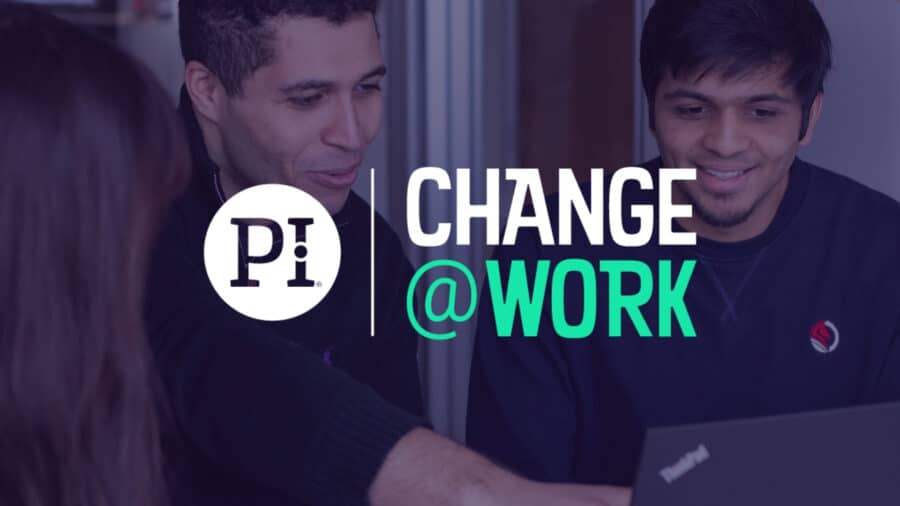As part of The 2020 State of Talent Optimization Report, researchers surveyed 600 CEOs and VPs on how frequently their companies pursue change initiatives. The research shows a staggering 42% of companies pursue change initiatives quarterly.
As companies increasingly move into volatile, complex industries, organizational agility has become a competitive necessity. Change is the new normal. But how do you make sure your change initiatives—especially large-scale ones—are successful? That’s where expert advice can really help.
Jeanie Duck, former partner at Boston Consulting Group, is no stranger to dealing with change. As a consultant, she helped facilitate organizational change management for clients. In her book “The Change Monster,” Duck wrote extensively about why change initiatives fail or succeed.
At the 2019 OPTIMA conference, Duck shared some best practices for change management:
Align your change initiatives with your business strategy.
When first deciding on a change initiative, it’s important for senior leaders to be aligned on strategy. Otherwise, you risk conflicting views at the top of the organization—ultimately leading to chaos at the bottom.
Here are four questions to ask the team to gain alignment:
- Is this the right strategy for the organization?
- Is the organization capable of seeing this initiative through?
- Will management stick to this initiative when things get hard?
- On a scale of 1-5, how confident are you in our ability to successfully execute?
These questions are designed to kick-start tough conversations among the senior team—and air out any conflict or grievances early in the process. In doing this, you ensure everyone’s on the same page moving forward.
Consider the human side of change.
The human component of change is perhaps the most important—and underrated—aspect of effective change management.
For many employees, change initiatives can be met with discomfort or skepticism. After all, business strategies don’t execute themselves; people execute them. A change in business strategy means a change in how individuals behave or view themselves.
Here are a few ways senior leaders can ensure success:
Take responsibility—don’t pass it off to HR.
While “human” is in their job title, human resources can’t hold full responsibility for helping employees navigate the change management process.
Research from the 2019 Employee Engagement Report found that nine of the top 10 drivers of engagement were related to senior leadership. At the end of the day, it’s senior leadership that’s not only setting vision and direction, but also creating the organizational culture that motivates employees to execute.
It starts with a clear vision.
If employees believe in the vision—if they’re inspired by the mission—they’ll be willing to work through these challenges because they trust it’ll be worth the effort. This is why leadership alignment is critical.
One of those engagement drivers listed in the Employee Engagement Report was The senior leadership of my organization has communicated a vision of the future that motivates me. Without clear vision, engagement goes down—and failure rate increases.

Be transparent about changes.
Regular communication and transparency are key. Let employees know what’s happening and why. Another engagement driver is Senior leaders have clearly explained the reasons behind the changes made in the organization.
Your decision to change may be thoughtful and strategic, but do your employees know that? They need to be clear on not only the changes being made, but also the rationale for those changes.
In addition to clear, frequent communication, it’s necessary to tailor your leadership and messaging to the different types of employees working for you. While some staff may be eager for change and quick to adapt, it’s likely you have others who require more support in making the shift. They may be looking for more detailed change management strategies to better understand the transitions taking place.
Assign a project manager to the change initiative.
Much like you’d manage a project, you need to manage the many components of change.
Start by assigning an executive sponsor to the initiative. Who from leadership will champion this change and help to remove obstacles as they arise? When choosing an executive sponsor, consider who’s behaviorally aligned with the objective.
For example, if you’re implementing new systems to maximize efficiency, you’ll probably want to appoint a senior leader who’s wired for process, precision, and analysis.
In addition to an executive sponsor, you’ll want to appoint a project manager. This person will be dedicated to the success of the effort. They’ll identify and manage risks that could hinder your change initiative if left unchecked.
Project management ensures the initiative stays on track and that there’s a structured approach to how the change is rolled out. The goal is to be intentional—not implement something that will upheave the current state of the organization without proper planning and execution. Project management tools—such as Asana or JIRA—can help ensure the right resources are allocated, dependencies are considered, and appropriate parties are looped in.
Change initiatives are only becoming more common.
Employees either inhibit or embody change. It’s on leaders to mobilize their workforce to be a catalyst for strategic change—not a blocker. This can be achieved by hiring people behaviorally suited for innovation and flexibility—and inspiring them to be a champion for change.
Join 10,000 companies solving the most complex people problems with PI.
Hire the right people, inspire their best work, design dream teams, and sustain engagement for the long haul.


